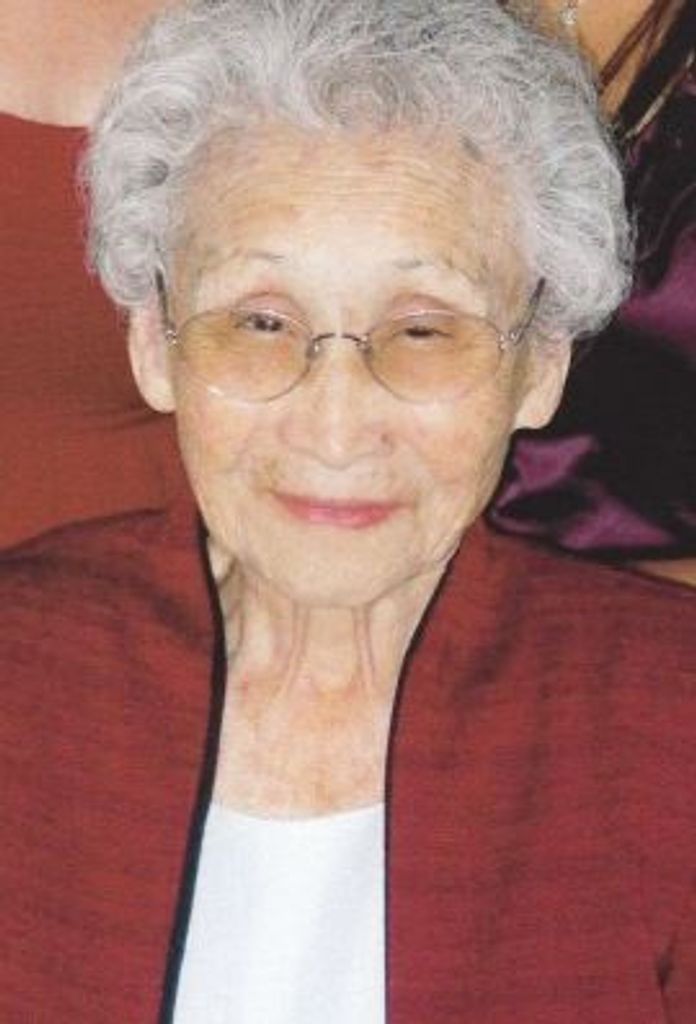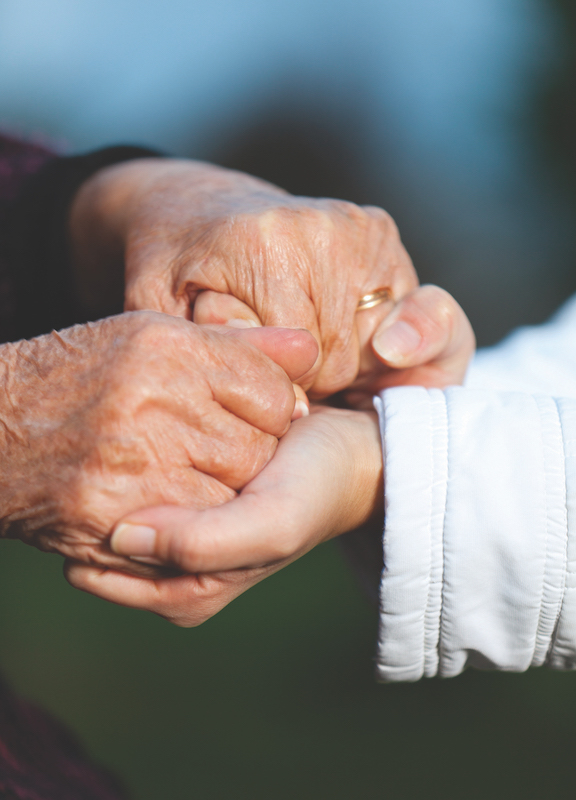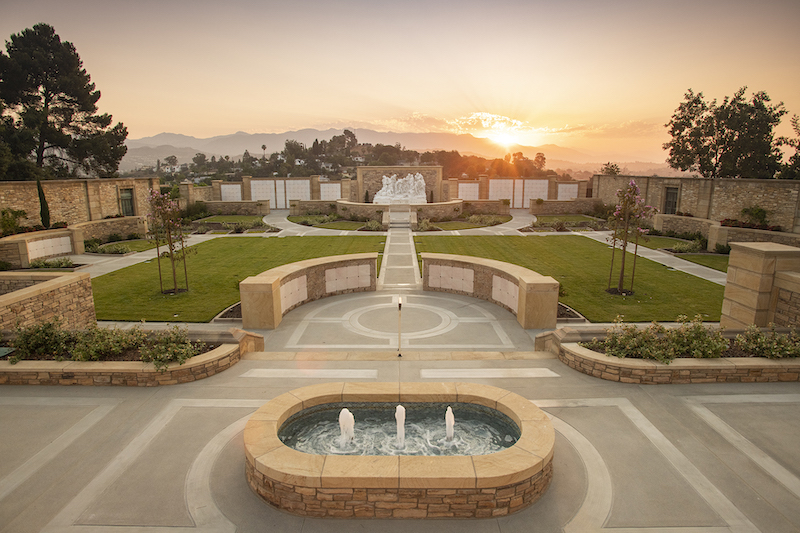

Mary Kaoru Cottrell
Mary Kaoru Cottrell
September 28, 1919 — June 28, 2014
When Mary was one and a half years old the family traveled to Gunma, Japan to visit relatives via a passenger ship. When they returned they changed to the less lucrative but "safer" produce farming (Motochika had been kicked by a cow and injured). Mary often talked about how hard they worked in the fields both before and after school. She said, "only the rich people could afford tractors, we just had a few mules." During her childhood the Miyata family suffered during the Great Depression, there was no running water, electricity or radio (until the 1930s). Her main chores were to make 5-6 lunches for herself and her siblings and clean the kerosene lamps. During her childhood two of her siblings William and Grace passed away and Henry suffered a disabling accident. Mary attended Brawley Union High School and graduated in 1937. She continued her education at Brawley Junior College and graduated with an AA degree in 1939.
In 1942 Japanese and Japanese Americans were incarcerated in American concentration camps under Executive Order 9066. Mary and her family (Ren, Frank, Henry, Tommy and Marcella) were sent to Poston I camp in Arizona by Greyhound bus. Her father, Motochika, joined the family after briefly being incarcerated in Lordsburg, New Mexico as an Enemy Alien. Mary talked often about making her mattress out of straw when she arrived. She disliked the heat and dust of the camp and the lack of privacy in the showers and the barrack-like living quarters, "everybody could see and hear everything you did." Also, she said that the food was mostly inedible and that "they gave us stuff to eat that we had never eaten before: beef hearts, mutton liver, etc. And worst of all, in the beginning, there was no rice!" Because there was an extreme shortage of teachers at the camp, Mary was asked to teach even though she did not have a teaching credential. She taught 3rd grade and enjoyed being a teacher. In 1943, Mary left Poston and the WRA (War Relocation Authority) found her a job at the Munsingwear factory in Minneapolis, MN. The president of the factory personally greeted Mary informing her that she was their first Japanese employee. She worked there for 2 years and was able to reunite with her sister Mae. While she was in the Midwest, she was able to visit Chicago and New York. When the Japanese were permitted to return to the West Coast shortly after Japan's surrender, the government provided fares that had to be used within 3 months an Mary took the train back to southern California.
During the last months of World War II, Mary began writing to a young soldier, Kenneth Cottrell. Mary and Kenneth had a mutual friend that introduced them via handwritten mail correspondence; they were "pen pals." When the war ended, Kenneth left Seattle, WA (his birthplace) and came down to Los Angeles in 1946 to meet Mary in person for the first time. Within a few months they married in Tijuana, Mexico, as they could not marry in Los Angeles: the state of California had an anti-miscegenation law that stated: "All marriages of white persons with Negroes, Mongolians, members of the Malay race, or mulattoes are illegal and void".
During the late 1940s and the early 1950s, there was a housing shortage in the Los Angeles area and Ken and Mary lived for a few years in Quonset huts in the Roger Young Village Housing Project near Griffith Park. During this time period they had two children, Donna (born in 1947) and Janis (born in 1949). Ken got hired at the Los Angeles Terminal Annex Post Office in downtown Los Angeles and Mary worked part-time doing odd jobs out of the home. They had been saving money and began to look for a house to buy with Ken's G.I. Bill. However, this was a difficult time for a mixed marriage couple to try to buy property in a good neighborhood. The Fair Housing Act was a decade in the future and it was legal to decline to sell property based on race. Mary and Ken were turned down at numerous places, when finally, in 1954, a new housing development in Long Beach, CA agreed to sell them a home because "only one of you is a minority."
In the 1950s, Mary worked full-time at a rubber factory in downtown Los Angeles. Later, after the birth of their third child, Rodney (born in 1956), Mary began to work part time as a cafeteria worker in a local elementary school for the Long Beach Unified School District (LBUSD). Mary also took care of her mother, Ren, for the last three years of Ren's life. In 1967, the family went through an extremely stressful time: daughter Janis became ill and was hospitalized. Many attempts to bring her home were unsuccessful and Janis has spent her life in various facilities.
Mary continued to work part time for a couple of decades and then decided to work full-time at the LBUSD main kitchen in downtown Long Beach until she retired at age 70 years. After retiring in 1989, Mary began to volunteer to help serve lunches at the Long Beach El Dorado Park Senior Center. She continued to volunteer for the next 23 years, until she was 92 years old. Mary enjoyed her retirement and she loved to travel and took many trips to Europe and Japan. During this time, Mary lost her husband Ken in 1993 and her son Rodney in 1997.
Mary maintained strong ties to her past. In 2004, she visited The Colorado River War Relocation Center to see the Poston Memorial Monument Site and Camp I School Ground and restoration area. The Poston Family Reunion was held in Laughlin, Nevada and it was the first time in 60 years that Mary had gone back to Poston. Several months later on February 5, 2005, Mary was one of the honorees at the Japanese American National Museum's Annual Gala Dinner, "Teaching From the Heart: Honoring Educators from America's Concentration Camps." Over the years Mary had visited Brawley periodically, the last time was in March 2011 when Mary attended the Imperial Valley Nikkei Reunion for the Japanese American Gallery's Re-Opening and Dedication..
In 2005, she developed glaucoma and could no longer drive. She then moved from her home of 52 years and settled in with her daughter Donna and granddaughter Midori in 2006. During the last decade of her life, Mary enjoyed many vacations with Donna, Midori and close family friend, Deb Howard. Mary visited Kauai and Maui, Hawaii; Seattle and Vashon Island, Washington; Los Cabos, Mexico; Las Vegas, Nevada; and San Mateo, Santa Cruz and Ramona, CA.
Mary passed away peacefully after a short illness from spinal cancer. Mary outlived her nine siblings. She is survived by her daughters, Donna and Janis, granddaughter Midori, cousin Roy (Tatsushi) and his wife Mary and cousin Satoshi, sister-in-law Tomiko and numerous nieces, nephews and grandnieces/nephews.
Service arrangements are under the direction of Forest Lawn, Cypress, California.
Service Schedule
Past Services
Graveside Service
Forest Lawn
Guestbook
This site is protected by reCAPTCHA and the
Google Privacy Policy and Terms of Service apply.
Service map data © OpenStreetMap contributors
© 2023 Forest Lawn Memorial-Park Association
FOREST LAWN MEMORIAL-PARKS & MORTUARIES | Arcadia - FD 2186 | Cathedral City - FD 1847 | City of Industry - FD 2121 | Coachella - FD 640 | Covina Hills - FD 1150 | Cypress - FD 1051 | Glendale - FD 656 | Hollywood Hills - FD 904 | Indio - FD 967 | Long Beach - FD 1151 | Whittier - FD 2302
We respect your privacy and will not sell your personal information. Forest Lawn will collect and use the information you provide here to periodically email, call, text or message you with information about products, services, and events according to the terms of the Forest Lawn Privacy Policy and Terms of Use until you change your communication preferences at www.forestlawn.com/preferences.
Health Insurance Coverage Transparency
Cigna • Kaiser





